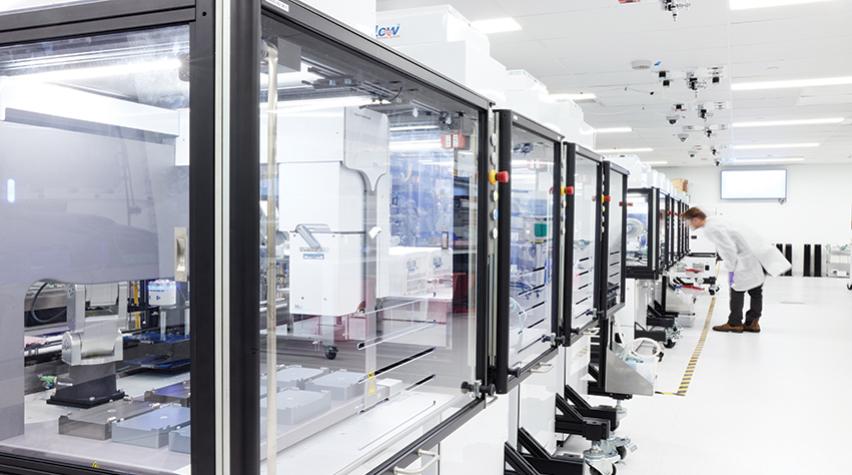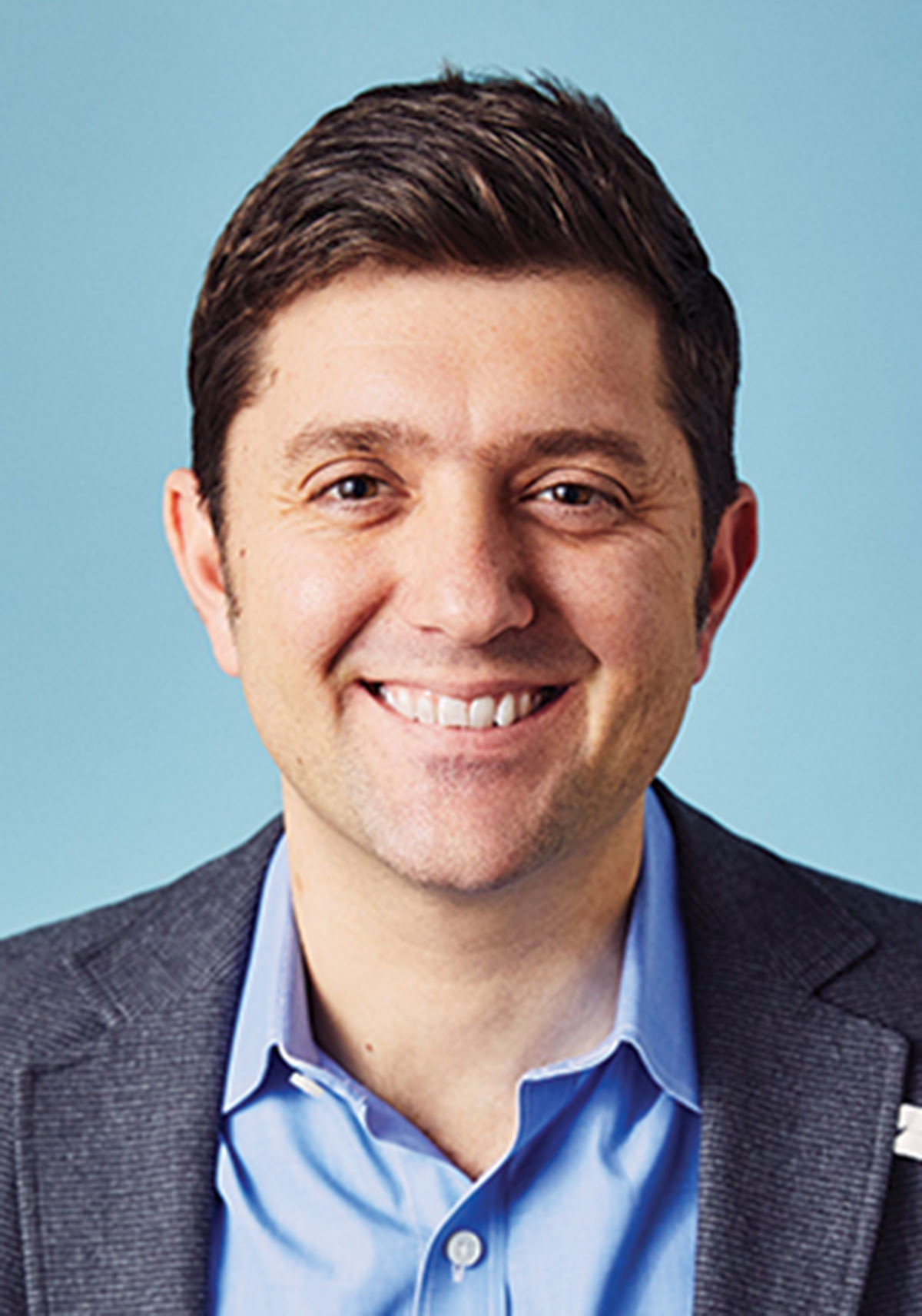
To most teenagers, Jurassic Park is nothing more than an entertaining film with thrilling action scenes, realistic effects, and a catchy soundtrack. However, for Jason Kelly — founder and CEO of Ginkgo Bioworks — the movie and book served as an introduction to the innovative world of genetic engineering and its limitless possibilities. Kelly, who grew up in Jupiter, FL, recalls being fascinated with the scientific and creative nature of the story, which inspired him to work on a high school project in genetic engineering and, later, pursue a career in the field.

Kelly attended the Massachusetts Institute of Technology (MIT) for his undergraduate degree, double majoring in chemical engineering and biology. He stayed at MIT to pursue his PhD in biological engineering, which he completed in 2008. While working on his PhD, Kelly noticed a gap in the field of genetic engineering. In order to engineer an enzyme, for example, one would need to spend countless hours in a lab, editing numerous different segments of genetic code and testing to see if the enzyme performed the desired function. This process, in addition to being tedious and prone to human error, is a rate-limiting step in the advancement of biotechnology products. Kelly, having experienced this firsthand, wanted to change this.
First steps
Seeking a solution, Kelly turned to the origins of chemical engineering for inspiration. Before the field as we know it today was developed, scientists used applied chemistry to solve complex problems. Without the modern chemical engineering toolkit, specifically unit operations, scientists mainly relied on batch processing to manufacture industrial chemicals. The development of unit operations — such as distillation columns, crystallizers, and heat exchangers — revolutionized problem-solving by breaking processes into manageable steps. Kelly wondered if he could replicate this concept in biotechnology. “What are the equivalents of that for genetic engineering?” he questioned. “What are our unit operations?”
Incorporating innovation
After earning his PhD, Kelly founded Ginkgo with three fellow graduate students and one of their professors. As genetic engineers, they wanted to build and design organisms using the principles of biology but incorporate the innovative nature of engineering. This sparked Ginkgo’s mission: “To make biology easier to engineer.” If genetic engineering is fast and reliable, biotechnology products could be designed more rapidly and precisely, advancing society with technologies such as pharmaceuticals, agricultural products, and biofuels.
Automation tools
The core of Ginkgo’s innovation is laboratory automation tools, similar to chemical engineering unit operations, that can be implemented into a biotechnology lab to expedite the trial-and-error approach typical of genetic engineering. Ginkgo engineers developed automated robots capable of performing certain major molecular biology lab operations in a semi-standard way (pictured above). Each operation can be custom-designed to meet the product’s end goal, similar to how a reactor, for example, can be modified in size, temperature, pressure, or feed inputs to facilitate a specific reaction.
“Cells are kind of like little chemical plants, in a way. They basically speak in the language of chemicals and proteins, sort of like little catalysts,” Kelly suggests. This is what allows the fundamentals of chemical engineering to be applied to genetic engineering. The automated tools can be ordered and reordered, depending on the needs of the project, and are placed on an automation cart, where a robotic arm and magnetic track move sample plates from one piece of equipment to another. The system is then controlled by integrated software. The illustration below shows an example of how these carts might be configured.

Photo: This depiction of Ginkgo’s Reconfigurable Automation Carts (RACs) illustrates how the carts can be rearranged and configured to meet the needs of each experiment. Image courtesy of Ginkgo Bioworks.
Navigating funding
The process of founding Ginkgo and getting to the point where they could produce automated tools, however, was not achieved without difficulties. When developing Ginkgo’s business model, Kelly and his co-founders first attempted to raise venture capital (VC) but were faced with setbacks. The 2008 financial crisis was in full swing, and investors were hesitant to lend money to young entrepreneurs who didn’t have plans to produce therapeutic drugs, which are the most common biotechnology product and, thus, the most familiar to investors. Instead, the founders drew on what they had learned to do in graduate school: write grant applications. They applied for federal grant programs, such as the National Science Foundation’s (NSF’s) Small Business Innovation Research (SBIR) program, which awarded them enough funds to buy used glassware and other lab equipment and rent a cheap workspace.
After about five years of building the company, Kelly and his team were ready to reenter the VC world. In 2014, Ginkgo was accepted into the prestigious Y Combinator (YC) start-up accelerator, becoming the first ever biotechnology company to go through the incubator. Over the next seven years after completing the program, they raised $900 million in VC. In 2021, they transitioned from being a private company to a public company.
Present day
Today, Ginkgo has roughly 200,000 ft2 of lab space in Boston, MA, where they build their own robotics. Up until about a year ago, the company served as an outsourced research service, in which other biotechnology companies would send samples to the facility, and Ginkgo would run them through the automation tools to generate large molecular datasets. More recently, however — in addition to Datapoint, their outsourced research service — they have started selling their robotics to pharmaceutical and diagnostics companies. This will allow for better development of and integration with artificial intelligence (AI) models and neural networks — something Kelly is excited about.
Dual share class
When reflecting on his career thus far, one of Kelly’s proudest accomplishments is how he and his team structured their company to be employee-centric. They exercise what’s called a dual share class, in which B shares have ten times the value of A shares. When the company raises money from public investors, the investors vote in proportion to the size of their holdings. Where Ginkgo is unique, however, is that they give B shares to all employees — not just the founders and company executives. This empowers employees, giving them more say over the direction of the company and creating a people-first business structure.
Taking risks
Although it can seem intimidating to start a company right out of graduate school, Kelly argues that this is the prime opportunity to do so. Founding a start-up immediately after school is common in the software engineering world but less so in the hard sciences and engineering.
“There’s this sense that you can’t start companies right out of school. I don’t think that’s true,” he claims. Students straight out of school are already used to living off of a graduate school salary, unlike most working professionals. Since acquiring funding when starting up a company is often an obstacle, they can pay themselves a similar salary and keep their same lifestyle.
Knowing that a postdoctoral fellowship — a common next step after a PhD — will always be there, Kelly advises that if a PhD candidate or recent graduate is interested in starting a company, they should take the risk before falling back on a postdoc. “You just have got to be willing to stomach the uncertainty of the job being there,” he says. “And I wish I would see more grad students do that.”
Jason Kelly is a keynote speaker at AIChE’s 7th Commercializing Industrial Biotechnology (CIB) conference, which will be held in Cambridge, MA, May 13–15.
This article originally appeared in the Profile column in the April 2025 issue of CEP. Members have access online to complete issues, including a vast, searchable archive of back-issues found at www.aiche.org/cep.


